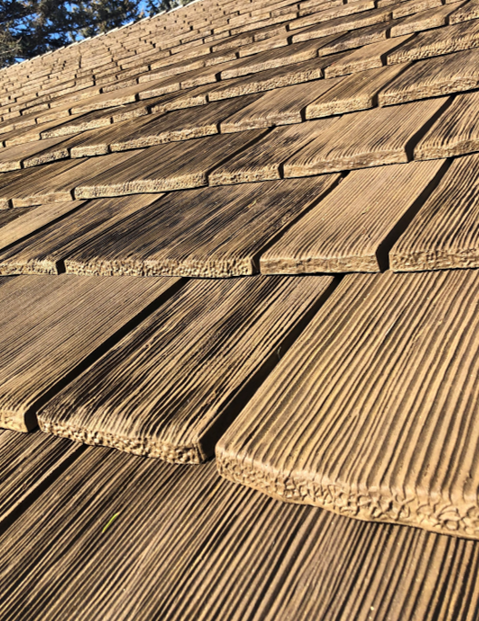Essential Inquiries to Ask Gainesville Roofing Companies Prior To Hiring
Essential Inquiries to Ask Gainesville Roofing Companies Prior To Hiring
Blog Article
Best Practices for Ensuring Proper Roof Covering Air Flow
Making sure proper roofing air flow is critical for the long life and efficiency of a roof system. A balanced intake and exhaust air vent proportion, typically 1:300, plays a pivotal role, with consumption vents preferably positioned at the reduced edge of the roof covering for amazing air entrance and exhaust vents at the optimal for warm air leave. Routine examinations to recognize blockages and keep clear air flow are paramount. Moreover, maintaining insulation far from vents is important to avoid airflow limitation. Understanding these foundational elements sets the stage for even more detailed understandings right into setup and maintenance methods that can dramatically enhance your roof's performance.
Understand Air Flow Essentials
Properly recognizing ventilation basics is vital for making sure the long life and efficiency of roof systems. Effective ventilation alleviates moisture buildup and temperature level extremes in the attic room, both of which can lead to considerable architectural damages gradually. A well-ventilated roof covering assists in stopping common concerns such as mold and mildew growth, wood rot, and ice dams, which can compromise the honesty of the roof covering materials and the underlying frameworks.
The primary goal of ventilation is to help with the activity of air, allowing for a constant exchange between the interior and exterior environments. This equilibrium is accomplished through a combination of consumption and exhaust vents that collaborate to keep ideal airflow. Consumption vents, generally located along the soffits or eaves, enable fresh air to enter the attic room space, while exhaust vents, frequently situated at or near the roof covering ridge, allow hot, humid air to run away.
Key factors affecting the efficiency of roof covering air flow include proper placement, adequate sizing, and ensuring that both consumption and exhaust vents are unhampered. Routine inspection and upkeep are essential to identify potential blockages, damages, or ineffectiveness in the ventilation system, consequently protecting the roof covering's performance and longevity.
Sorts Of Roof Vents
Roof vents play a vital function in keeping effective attic air flow and, by extension, the overall health and wellness of the roofing system. Different kinds of roof vents are available, each with distinct benefits tailored to specific roof needs.

Soffit vents are set up under the eaves and operate in tandem with roof covering vents to ensure a well balanced intake and exhaust system. By permitting cooler air to get in from below, soffit vents help with the expulsion of warm air via upper vents. Gable vents, located on the outside walls of the attic room, offer an additional efficient solution, especially in homes with saddleback roofs.
Examine Your Current Ventilation

Following, think about the age and condition of your roofing products and air flow parts. Older systems may not follow existing building regulations or may have deteriorated with time, lowering their efficiency. Conduct a thorough assessment to identify any kind of indicators of deterioration, such as corrosion, damages, or voids that could endanger the system's efficiency.
Furthermore, gauge the attic room temperature and moisture degrees. High temperatures and humidity can show navigate here inadequate ventilation.
Installation Best Practices
Effective installation of roof air flow systems is vital for making sure optimum efficiency and long life. Correct installment begins with understanding the specific ventilation requirements of the structure and the roof it covers. This involves determining the appropriate ratio of intake to tire vents, typically sticking to the 1:300 regulation, which specifies one square foot of ventilation for every 300 square feet of attic floor space.

Consumption vents should be installed at the roof covering's lower edge, commonly in the soffits, to enable cool air to go into. Exhaust vents, on the other hand, ought to be set up near or at the roof covering's top to help my company with the leave of cozy, moist air.
Seal all vent connections carefully to stop air leaks and possible water infiltration. Usage high-quality products and adhere to maker standards to ensure toughness and effectiveness. Furthermore, incorporating ridge vents with baffles can dramatically boost air flow performance by preventing wind-driven rain and snow from going into the attic room.
Inevitably, exact installment of roofing air flow systems minimizes prospective problems such as mold and mildew growth, ice dams, and structural damage, ensuring the roofing's integrity and the building's total health and wellness.
Regular Maintenance Tips
Consistency in maintenance practices is basic to making certain the long-term performance of roof covering air flow systems. Throughout these evaluations, make certain that vents are free of particles, nests, and other blockages that could impede airflow.
Cleaning the vents is an additional vital task. Utilize a soft brush or a vacuum to eliminate dirt and debris from intake and exhaust vents. Be cautious not to damage the air vent screens or louvers throughout the procedure. Furthermore, inspect the attic area for any kind of indications of water damages, which can compromise the honesty of the roof.
Appropriate insulation is just as important. Make sure that attic room insulation does not obstruct the vents, as this can badly restrict air flow. If any type of insulation has actually changed or settled, reposition or change it to maintain an effective barrier.
Finally, replace any kind of harmed or missing out on components quickly. Broken vents, broken roof shingles, or worn-out flashing can all add to inadequate ventilation and should be dealt with without find this hold-up. Normal upkeep ensures that the roofing ventilation system works efficiently, consequently expanding the lifespan of the roofing system itself.
Final Thought
Making certain proper roof covering ventilation is paramount for preserving the efficiency and toughness of a roofing system. Adherence to the 1:300 intake and exhaust vent proportion, coupled with the tactical positioning of vents, is crucial.
A balanced consumption and exhaust air vent ratio, typically 1:300, plays a crucial role, with intake vents ideally placed at the reduced side of the roof for trendy air entry and exhaust vents at the peak for warm air departure. Consumption vents, typically situated along the soffits or eaves, allow fresh air to go into the attic room room, while exhaust vents, often located at or near the roofing ridge, make it possible for hot, moist air to escape.
Soffit vents are installed under the eaves and job in tandem with roofing system vents to make sure a well balanced consumption and exhaust system. By permitting cooler air to enter from below, soffit vents promote the expulsion of warm air via top vents. Adherence to the 1:300 consumption and exhaust air vent proportion, paired with the strategic placement of vents, is essential.
Report this page